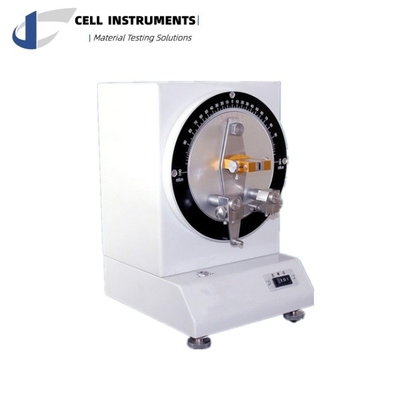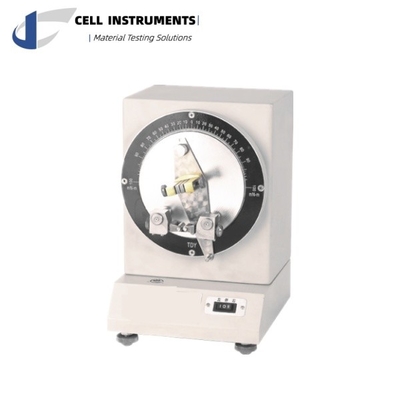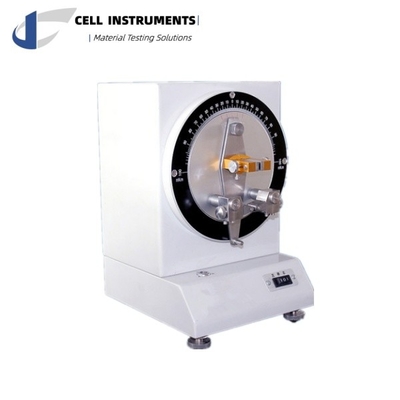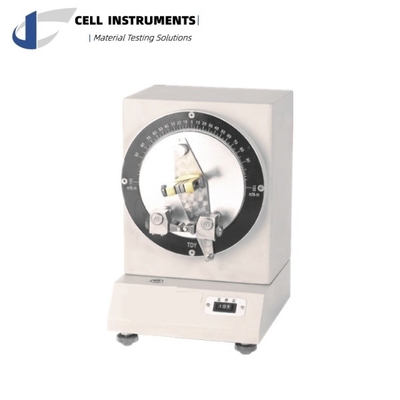Taber Bending Tester For Paperboard Packaging Material ASTM D1388 Paper Cup Material Stiffness Tester For Sale

Contact me for free samples and coupons.
WhatsApp:0086 18588475571
Wechat: 0086 18588475571
Skype: sales10@aixton.com
If you have any concern, we provide 24-hour online help.
x| Test Range | 1~500 MN.m (in 7 Ranges) | Bending Length | 50mm±0.1mm |
|---|---|---|---|
| Testing Speed | (200°±20°)/min | Bending Angle | 15°±0.3° And 7.5°±0.3° |
| 15°±0.3° And 7.5°±0.3° | 38*70 Mm |
Taber Bending Tester For Paperboard Packaging Material ASTM D1388 Paper Cup Material Stiffness Tester For Sale
![]()
![]()
Introduction of WTD-02 Taber Bending Tester for Paperboard Packaging Material
The Taber Bending Tester (model WTD-02) is an advanced instrument specifically designed to measure the bending resistance of paper, paperboard, and other flexible packaging materials. It is a crucial tool for industries such as packaging, food, pharmaceuticals, and beverage manufacturing, where material stiffness directly impacts product quality. This device complies with various international standards, including ASTM D1388, ISO 2493.2, and TAPPI T566, ensuring precise and reliable test results. By using the Taber Bending Tester, laboratories can achieve high accuracy when determining the bending resistance, stiffness, and overall flexibility of different materials, which are key factors in product durability and handling.
Why Use the Taber Bending Tester?
Bending resistance plays a vital role in determining the structural integrity of materials used in packaging, particularly for products exposed to mechanical stress. For instance, food and pharmaceutical packaging materials must resist bending to ensure their shape and structure are maintained during transportation and handling. The Taber Bending Tester offers a simple, reliable way to assess the bending stiffness of paperboard and similar materials, helping manufacturers identify the best materials for their applications.
The Taber Bending Tester method is particularly useful for evaluating materials with higher grammage (weight per unit area) and allows precise measurement of bending moment in millinewton meters (mN·m), ensuring compliance with international testing standards.
Key Features and Benefits of the Taber Bending Tester
-
Precision Testing: The Taber Bending Tester allows for highly accurate measurement of bending resistance. The device calculates the bending moment required to deflect a clamped specimen by either 15° or 7.5°, depending on the material’s flexibility. This flexibility ensures that both rigid and delicate materials can be accurately tested.
-
Multiple Test Ranges: The tester features a wide test range (1~500 mN·m) divided into seven gears. These adjustable ranges, paired with customizable weights and scale values, make the Taber Bending Tester suitable for a variety of materials and testing conditions.
-
Ease of Use: The Taber Bending Tester is user-friendly with a quick setup and easy operation. Its small footprint makes it ideal for labs with limited space. Moreover, the sample preparation process is straightforward, requiring minimal training for operators.
-
Compliance with Global Standards: The device adheres to internationally recognized testing standards, including ASTM D5342, ISO 2493.2, and TAPPI T489. These standards are vital for ensuring consistency in material testing and quality control across global industries.
-
Wide Application: The Taber Bending Tester is ideal for testing materials used in paperboard packaging, food containers, pharmaceutical packaging, beverage cartons, and other applications where material stiffness affects performance.
Taber Bending Test Method
The test is performed by bending a pre-cut sample of paper or paperboard through a specific angle using a standardized bending arm. The bending resistance is measured as the force (moment) required to bend the sample. This force is then expressed in millinewton meters (mN·m). The standard test involves bending a 38 mm wide vertically clamped specimen to 15°, with the option to use a half bending angle (7.5°) for more rigid samples. The bending resistance is directly linked to the sample’s grammage, stiffness, and structural integrity.
Technical Specifications
| Parameter | Specification |
|---|---|
| Test Range | 1~500 mN·m (7 adjustable ranges) |
| Indication Error | ±2% |
| Bending Length | 50 mm ± 0.1 mm |
| Testing Speed | 200° ± 20°/min |
| Bending Angle | 15° ± 0.3° and 7.5° ± 0.3° |
| Sample Size | 38 mm x 70 mm |
| Power | AC 220V 50Hz |
| Dimensions | 220 x 230 x 350 mm |
| Net Weight | 15 kg |
The Taber Bending Tester is equipped with a highly accurate scale and loading system that provides precise data output across its 7 test ranges, making it suitable for a wide variety of sample types.
Testing Standards Compliance
The Taber Bending Tester is designed to comply with several key international standards:
- ASTM D5342: Standard Test Method for Resistance to Bending of Paper and Paperboard.
- ISO 2493.2: Determination of Bending Resistance and Bending Stiffness.
- TAPPI T489: Bending Resistance of Paper and Paperboard.
- GB/T 2679.3: Bending Stiffness and Bending Moment for Packaging Materials.
These standards ensure the accuracy and reliability of testing results, making the Taber Bending Tester a trusted instrument in quality control labs worldwide.
Industries and Applications
The Taber Bending Tester is widely used across various industries for quality control and material testing:
- Packaging: Ensures that materials used in food and beverage packaging retain their structural integrity during transportation.
- Pharmaceuticals: Assesses the stiffness of blister packs and paperboard used in medicine packaging.
- Beverages: Tests carton board for beverage packaging to ensure durability.
- Textiles and Paperboard: Helps manufacturers determine the bending properties of fabrics, paper, and cardboard used in consumer products.
How to Use the Taber Bending Tester
- Sample Preparation: Cut a sample to the specified size (38 mm x 70 mm).
- Set the Parameters: Select the appropriate test range based on the expected stiffness of the material.
- Begin Testing: Clamp the sample and initiate the test. The machine will apply a controlled force to bend the sample through the required angle.
- Record Results: Read the bending moment from the scale, which will give a direct indication of the material’s resistance.
FAQs
1. What type of materials can be tested with the Taber Bending Tester?
The Taber Bending Tester is ideal for testing materials with high grammage, such as paper, paperboard, and packaging materials used in food, pharmaceuticals, and beverages.
2. Why is bending resistance important in packaging materials?
Bending resistance ensures that materials can withstand mechanical stress during handling and transportation. It helps maintain product integrity and prevents damage.
3. Can the Taber Bending Tester be used for testing textiles?
Yes, the Taber Bending Tester can be adapted to test the bending properties of textiles, providing valuable data on fabric stiffness and flexibility.
4. How does the bending resistance index work?
The bending resistance index is calculated by dividing the bending resistance by the material's grammage, raised to the third power. This helps standardize results across different material weights.
5. Does the Taber Bending Tester comply with international standards?
Yes, the Taber Bending Tester meets several international standards, including ASTM D5342, ISO 2493.2, and TAPPI T489, ensuring reliable and standardized results.






